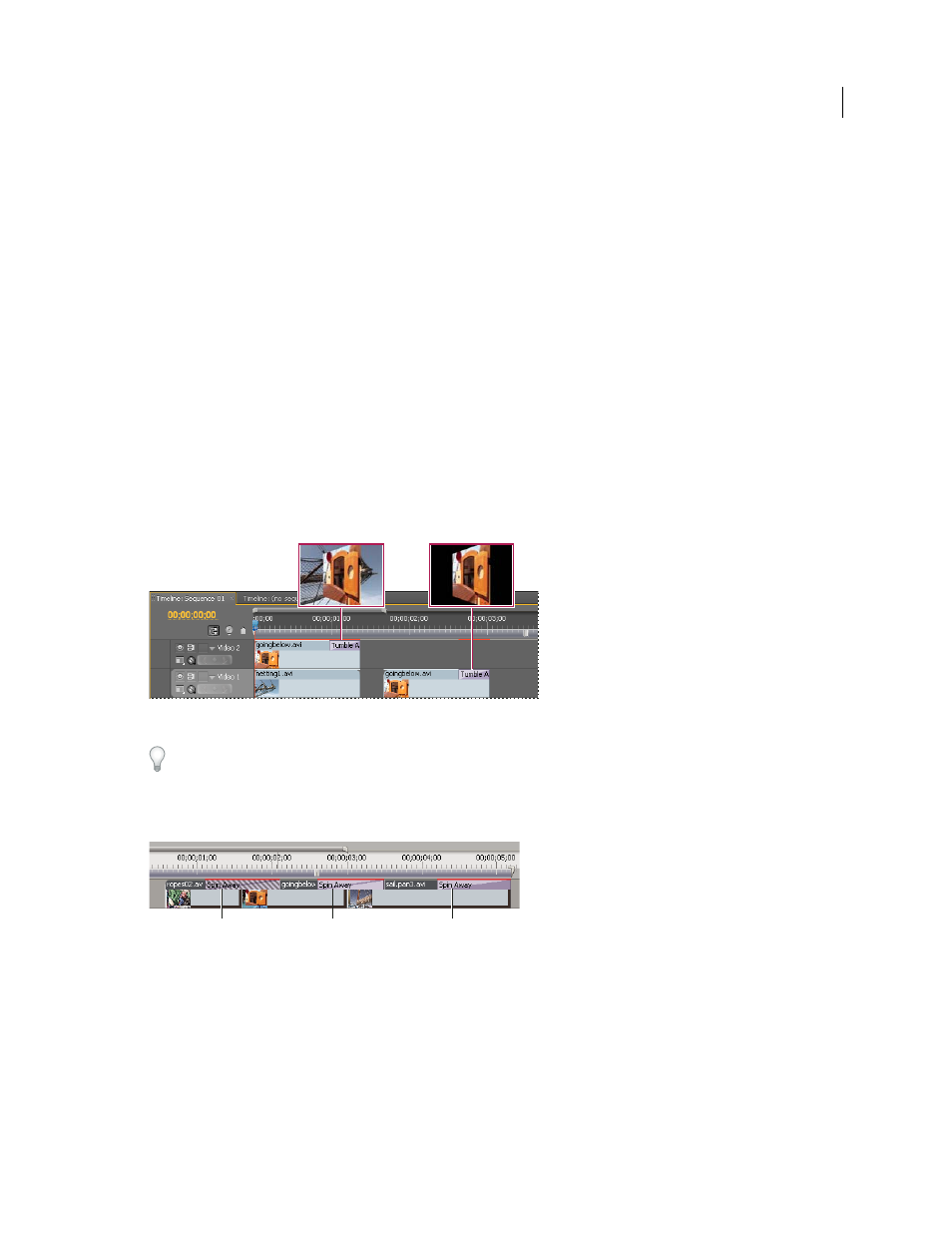Single- and double-sided transitions – Adobe Premiere Pro CS4 User Manual
Page 327

321
USING ADOBE PREMIERE PRO CS4
Effects and transitions
Last updated 11/6/2011
More Help topics
Single- and double-sided transitions
Transitions are typically double-sided—they combine the last video or audio material from the clip before the cut with
the first material from the clip right after the cut. You can, however, apply a transition to an individual clip so that it
affects only the beginning or end of the clip. A transition applied to a single clip is called single-sided. The clip can be
immediately adjacent to another clip or sitting by itself on a track. You can apply double-sided transitions only when
the clip before the cut has a handle at its tail, and the clip after the cut has a handle at its head. For more information,
see “
Using single-sided transitions, you have more control over how clips transition. For example, you can create the effect
of one clip departing using the Cube Spin transition, and the next clip fading in using Dither Dissolve.
Single-sided transitions fade to and from a transparent state, not to and from black. Whatever is below the transition
in a Timeline panel appears in the transparent portion of the transition (the portion of the effect that would display
frames from the adjacent clip in a two-sided transition). If the clip is on Video 1 or has no clips beneath it, the
transparent portions display black. If the clip is on a track above another clip, the lower clip is shown through the
transition, making it look like a double-sided transition.
Single-sided transition with clip beneath it (left) compared to single-sided transition with nothing beneath it (right)
If you want to fade to black between clips, use the Dip To Black dissolve. Dip To Black doesn’t reveal any underlying
clips; it always fades to black.
In a Timeline panel or the Effect Controls panel, a double-sided transition has a dark diagonal line through it, while a
single-sided transition is split diagonally with one half dark and one half light.
Types of transitions
A. Double-sided transition using duplicate frames B. Double-sided transition C. Single-sided transition
Note: If a double-sided transition must repeat frames (rather than use trimmed frames), the transition icon contains
additional diagonal lines. The lines span the area where it has used the repeated frames. (See “
320.)
A
B
C
